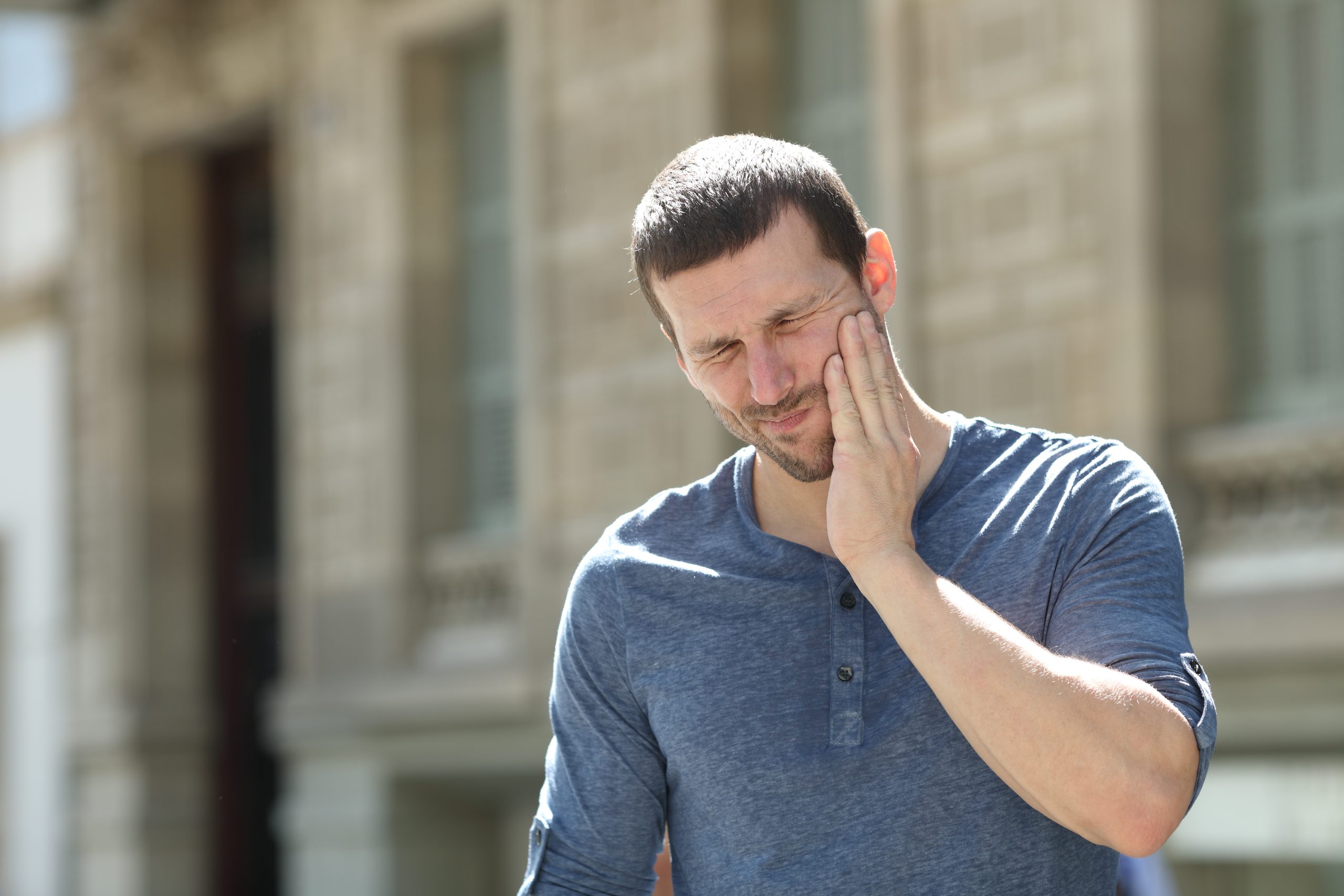Temporomandibular Joint Disorder (TMD)
The temporomandibular joint (TMJ) is where your jawbone connects to your skull – rather like a sliding hinge. You have one joint on each side of your jaw. TMJ disorders — a type of temporomandibular disorder (TMD) — can cause pain in your jaw joint and in the muscles that control jaw movement. This can also manifest in pain in or near the ear, and result in migraine-like pain.
The exact cause of a person’s TMJ disorder is often difficult to determine but is usually due to a combination of factors, such as genetics, arthritis, or jaw injury. Some people with jaw pain also tend to clench or grind their teeth (bruxism), although many people habitually clench or grind their teeth and never develop TMJ disorders.

Signs & Symptoms
TMD symptoms include pain in the jaw, an inability to open the mouth thoroughly, and “crackling” or “popping” noises when moving the jaw. Other possible symptoms include earache, ear ringing, headache, dizziness, and difficulty swallowing.
Causes of TMD may be the result of:
- Trauma from dental work, a car accident, or a blow to the face
- Chronic teeth clenching and grinding (known as bruxism) at night
- Tension in the neck and face from stress and poor posture.
Contact Us
Physical Therapy for TMJ or TMD
- Pain reduction methods such as ice packs
- Trigger point dry needling
- Manual Therapy and joint mobilization treatments to help improve movement and relieve pain in tissues and joints.
- TMD Soft Tissue Mobilization: Treatment reduces pain, stiffness, and muscle tension, resulting in improved movement by utilizing mobilizations to the jaw to help improve joint mobility. Mobilizations can restore normal joint motion and may help relocate a displaced articular disc in the jaw joint.
- Massage therapy
- Exercises for the jaw: The goal of exercise for TMD is to restore normal, pain-free jaw motion.
Talk to one of the physical therapy specialists at Vita today about treatment options for neck pain.
